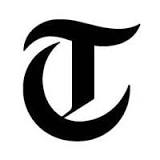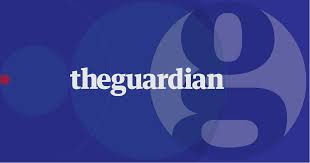what wine to buy in paris

Follow these tips for buying wine in Paris. Photo: DesignWallah Few beverages seem as intimidating as wine. Images of blind tastings, snobbish conversations about vintages, and hefty price tags immediately come to mind. Coming to Paris, wine drinkers are like kids in a candy store. Affordable and delicious wine flows freely, but travelers can easily be duped. Whether you’re looking for some vin rouge to go with your dinner or you want a bottle for a friendly picnic, here are some tips to keep in mind for picking an affordable wine. Higher prices and pretty labels are not indicative of how much you will like a wine. Bottles at restaurants can cost €20, €40, €60 and beyond. While the wine will probably be good, less discerning pallets can opt for the much cheaper and equally tasty carafe or pichet of wine. This is a house wine that is served in a small pitcher or glass bottle that comes with none of the frills of a Saint-Emillon or Chateauneuf du Pape, but it will still be a tasty accompaniment to most French meals.

Don’t feel goofy asking for a pichet at lunch or dinner, because even the locals will order up some house red, white, or rosé on a typical evening. When purchasing a bottle of wine at the grocery store or wine store, even Cheapos have a limit. Any bottle under €3 is rarely something that you’d want to drink, more often reserved for cooking or wild student parties. Stick to the €5-10 range to ensure that the wine won’t make you wince. Look for the AOC, or appellation d’origine contrôlée on any bottle you purchase. This indicates that the wine is a credible Bordeaux, Burgundy, or whatever other region (origine) it may claim. Without the AOC, there is no way to know if the wine was made by a professional or from some guy down the street in his bathtub. Still, if you go to a wine bistrot like Le Verré Volé, many of their wines don’t have a AOC. However, you can be sure that the specialists in the store have visited the vineyards and know exactly where that wine is coming from.

Box is OK, but plastic jugs might be pushing it. Box wine is not quite trendy, but is accepted with wine stores like Nicolas offering up affordable varieties. The liter-sized plastic jugs at the supermarkets, however, are not to be trusted. Take a tip from someone who may or may not have been there – it’s not worth testing unless you want your wine to double as a paint-remover. If you taste a wine and it doesn’t suit your tastes, hopefully you didn’t buy a whole bottle of it at a restaurant. That said, if a wine tastes particularly offensive, with smells and tastes that seem unfit for any mouth, it may be corked, which means the wine has been spoiled in the bottling or aging process. While rare, receiving a corked glass or bottle of wine can happen, and if you are really unable to drink the wine, ask your bartender or server what they think and they will usually be honest with you. With aisles devoted to all sorts of regional French wines, Parisian supermarkets like Monoprix and Franprix are acceptable places to buy a bottle for dinner or a picnic.

Join the conversation in our comments section! Also in our guide: Heading to Paris soon and looking for advice on great affordable sleeps? Our editors have hunted down the best hotel deals, all visited, inspected and reviewed by EuroCheapo. Read more in our Paris guide. Note: This post was updated on September 30, 2015 with new links, photos and information.FRENCH wine labels seem designed to confuse buyers rather than enlighten them. They often don't tell you the grape variety, what it tastes like, or even how sweet or dry it may be. The largest print is often more likely to be the name of the village or region, which may tell you very little about the wine.Hundreds of individual producers make Chablis or Sancerre, for example, and sell it under almost indistinguishable labels. So, bear in mind that while Jean Dupont's Cotes du Rhone may be delicious, his lazy cousin Jacques's might taste just like bilge-water.Choose well, however, and from as little as £3 a bottle you can find excellent wines - many of which never make it to the British shops.

Here is our guide to the best buys, region by region.Alsace The quality of winemaking varies enormously, too. Perfectly decent, basic Gewürztraminer, for example, can be found for less than £3 a bottle at the region's many huge cooperatives, but you can find far more intense and interesting - and far pricier - examples of this grape made by domaines that may well work according to the rules of organic agriculture and limit yields to tiny amounts per vine.Unless they are labelled Vendange Tardive - late harvest - or Sélection de Grains most wines tend to be fruity and rich but more or less dry. However, almost identically labelled bottles of Gewürztraminer and Pinot Gris can vary widely in the level of sweetness they contain. The sweeter ones can be delicious, but it would be helpful if their producers gave some warning of the style you are going to find when you pull the cork.Where to buy Dom Weinbach (03 89 47 13 21 by appt) is run by Laurence Faller, one of France's growing band of highly successful winemaking women.

It produces small quantities of all of the principal grape varieties in the village of Kayserberg. Cave de Turckheim (03 89 30 23 60 by appt) is a big cooperative with reliable wines at every price and quality level. Bordeaux The style of red Bordeaux is essentially dictated by three factors. First, there are grape varieties (Médoc and Graves tend to use more Cabernet Sauvignon, which explains their blackcurranty flavour, while St Emilion, Pomerol, Fronsac, Côtes de Castillon, Cotes de Blaye and Bourg all have much more Merlot and tend to be softer and plummier). Second, there is the proportion of new oak barrels that has been used; and third, there's the vintage. The weather varies radically from one year to the next and a cool, rainy summer will make for dilute, unripe-tasting wines.Where to buy Château de la Riviere, Fronsac (05 57 55 56 56 by appt) has a classic fairy-tale castle that would be worth a visit even if it produced no wine at all. Look out for the recently launched "Aria" super-cuvee: costlier, but worth it.

Château Bonnet (05 57 25 58 58) makes reliably good-value (under £5) red and white from the Entre-Deux-Mers region - and the family makes far pricier wine at the more famous Château la Louviere. Château Sociando-Mallet (05 56 73 38 80 by appt) is a top-class Médoc estate - the wine to buy is La Demoiselle de Sociando-Mallet, the château's lower-priced "second wine". Burgundy There is a ludicrous number of separate appellations here, ranging from large areas like Mâcon Villages and Beaujolais, whose wines appear in every supermarket, to tiny "Grand Cru" vineyards such as Clos de Tart that produce a few thousand bottles per year.Burgundy has a few excellent large merchants and cooperatives, but most of the best wine comes from small, family-owned estates.Collecting a case of wine yourself could not only easily save you £7 or £8 a bottle; it will more than likely allow you to find a wine on which you could never lay your hands in Britain.Where to buy Chablis: La Chablisienne (03 86 42 89 89) is one of the best cooperatives in France, with wines ranging from the most basic Petit Chablis to the grandest of Grands Crus.

Michel Laroche (03 86 42 89 28 by appt) is the region's most dynamic merchant. The St Martin is particularly good value. Moreau-Naudet (03 86 42 14 83 by appt) is a family-run business with superlative wines. The Chablis Vaillons is a great buy. Côte d'Or: La Cave des Hautes-Côtes (03 80 25 01 00), on the Route Nationale south out of Beaune, offers a wide range of wines of varying quality. The basic Burgundy is generally good value at under £5. A-F Gros (03 80 22 61 85 by appt) is one of many members of the Gros family who make wine in and around Vosne Romanée. If you want to taste red Burgundy at its best, try the lovely rich "Aux Réas" 1999. Great value at about £15. Champagne The first key to buying Champagne lies in knowing the kinds of grape that have been used. Most of this region's wine is a blend of two black grapes (the Pinot Noir and its cousin, the little-known Pinot Meunier) and one white, the Chardonnay, which makes a richer style. A bottle labelled as Blanc de Blancs, however, will invariably be a pure Chardonnay, which gives it flavours of apple, pear and pineapple.

Another useful hint is that Brut Champagne should be pretty dry, while Extra Dry is actually a little softer and sweeter.Where to buy Jacquesson (03 26 55 68 11 by appt) and Billecart-Salmon (03 26 52 60 22 by appt) are less often seen in Britain than the offerings of bigger producers, but these two firms produce some of the best Champagne of all. The Billecart-Salmon Rosé is superlative. Pierre Gimonnet (03 26 59 78 70 open daily; Sat by appt) is a small estate with lovely Blanc de Blancs. The Loire Among the wines most worth buying are the reds of Chinon and Bourgueil whose fresh blackcurrant flavour offers an opportunity to taste the Cabernet Franc grape at its unadulterated best. Other areas to explore are Sancerre, Quincy and Pouilly Fumé, where the Sauvignon Blanc is often at its best, and Vouvray and Savennières which are the showcase for white wines made from the appley Chenin Blanc grape. Savennieres is invariably bone dry, but Vouvray comes in just about every possibly level of sweetness.

Sec ought to be dry but, as in Alsace, often isn't.Where to buy Chateau de Chamboureau (02 41 77 20 04 by appt) is the place to find gorgeous dry Savennières with wonderful dry but honied Chenin Blanc flavours. Domaine des Aubuisières (02 47 52 67 82 by appt) is a small estate, offering lovely sweet Vouvray, and great value sparkling wine. Charles Joguet (02 47 58 55 53 by appt) is for many critics the king of Chinon. This is certainly a great place to discover the wines of this area. The Rhône The southern Rhone is the place to find red and white Côtes du Rhône (and Côtes du Rhône Villages which should be better) as well as Châteauneuf du Pape, Vacqueyras and Gigondas, the rosés of Tavel and Lirac and the sweet Muscats of Beaumes de Venise. The reds here are mostly blends but the key grape is the Grenache, which gives wines a recognisable peppery character.Where to buy Two British expats who are worth visiting for their Côtes du Rhône Villages wines are Walter McKinlay at Domaine de Mourchon (04 90 46 70 30 by appt) in Seguret and Nick Thompson at Domaine de l'Ameillaud (04 90 30 82 02 by appt) in Cairanne.